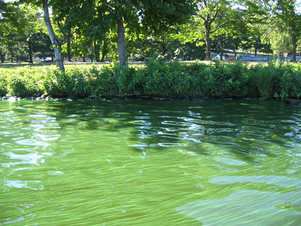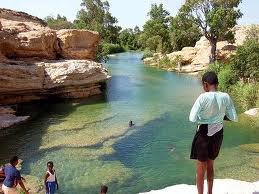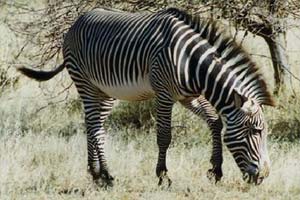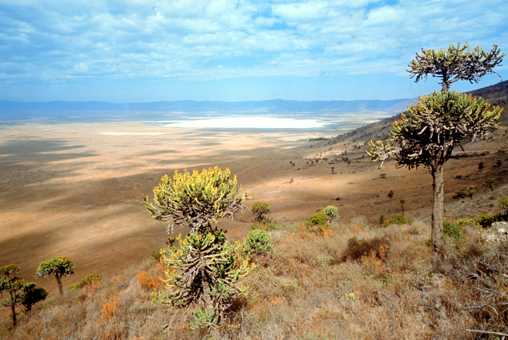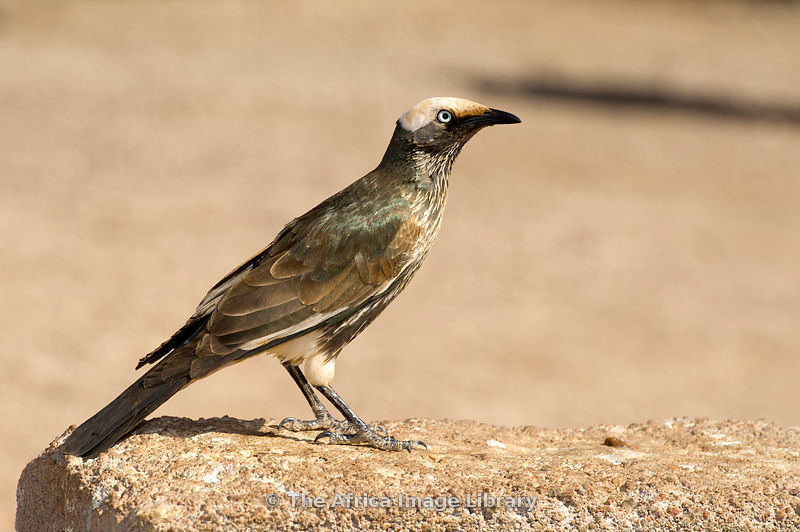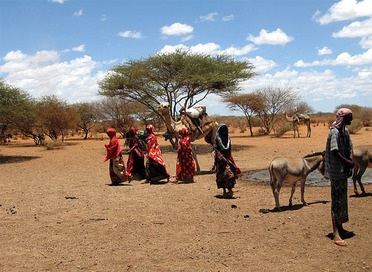|
The population of Somalia is around eleven million, and ethnic Somalis make up about 85% of the population. The remaining inhabitants are of Italian, Arabian, Indian, and Pakistani descent. Two main clans separate the ethnic Somalis: the Saab clan, which includes the Digil and Rahanweyn clans; and the Samaal clan , including the Isaaq, Darod, Dir and Hawiye clans. The Samaal clans are pastoralists, both nomadic and seminomadic, and the Rahanweyn and the Digil are sedentary herders and farmers. There are also small groups of Bantu speaking people located along the Jubba and Shabeelle rivers.
Somalia is in the eastern portion of Africa, known as the Horn of Africa, and occupies and area of about 246,140 square miles. The coastline of Somalia is the longest on the African continent. The weather is hot year round, with sporadic rainfall and seasonal monsoon winds. Monsoon season typically lasts from May to October in Mogadishu. Temperatures in Somalia can reach a high of 104 degrees Fahrenheit during the summer, and as low as 60 degrees Fahrenheit in the winter. There are two mountain ranges in Somalia: the Cal Madow range in the northeast and the Karkaar range near the Gulf of Aden. |
Formerly known as the Somalia Democratic Republic, but officially called the Republic of Somalia, the countries along its borders are Kenya to the southwest, Yemen to the north, Djibouti to the northwest, Ethiopia to the west, and the Indian Ocean to the east. Some of the largest cities in Somalia are Mogadishu, Hargeisa, Bosaso, and Buraro, all of which have a population over 250,000. Somalia was a very important hub of commerce in antiquities. Long ago, people from Babylon, Ancient Egypt and Mycenaea came to buy spices, frankincense and myrrh from the sailors and merchants of Somalia. The ancient Kingdom of Punt, a land known for its production and exportation of ebony, ivory, gold and aromatic resins, is said to have been located in Somalia, an excellent location for trading. The population of Somalia is around eleven million, and ethnic Somalis make up about 85% of the population. The remaining inhabitants are of Italian, Arabian, Indian, and Pakistani descent. Two main clans separate the ethnic Somalis: the Saab clan, which includes the Digil and Rahanweyn clans; and the Samaal clan , including the Isaaq, Darod, Dir and Hawiye clans. The Samaal clans are pastoralists, both nomadic and seminomadic, and the Rahanweyn and the Digil are sedentary herders and farmers. There are also small groups of Bantu speaking people located along the Jubba and Shabeelle rivers. Somalia is in the eastern portion of Africa, known as the Horn of Africa, and occupies and area of about 246,140 square miles. The coastline of Somalia is the longest on the African continent. The weather is hot year round, with sporadic rainfall and seasonal monsoon winds. Monsoon season typically lasts from May to October in Mogadishu. Temperatures in Somalia can reach a high of 104 degrees Fahrenheit during the summer, and as low as 60 degrees Fahrenheit in the winter. There are two mountain ranges in Somalia: the Cal Madow range in the northeast and the Karkaar range near the Gulf of Aden. |
HistoryFrom the seventh century to the tenth century, the people of Persia and Arabia set up trading posts along the coast of Somalia. Nomadic tribes that lived in the interior of the country sometimes tried to work their way into Ethiopia. In 1839, the British occupied Aden and the Somalian coast became a major source of food for them. In 1862, the French started a coal mining station and the Italians established a settlement. The entire area was ruled by Britain after 1941, bringing in Italy in 1950 to act as a United Nations trustee. Italy and Britain granted independence to their sectors, letting the two sections of Somalia join as the Republic of Somalia. In 1992, Africa suffered from its worst drought and a severe famine that resulted in the deaths of 300,000 people. Anarchy has been the prevailing theme in Somalia since 1991, with occasional talks of peace.
|
Famous Attraction
One of the most popular tourist spots is Sinbusi Beach, located about three miles from the city of Merca. This beach offers huts for overnight use, and bathroom and kitchen amenities are available. Visitors can stay in these huts with all the comforts of home, and a beach outside the door. An important landmark in Somalia is the Shanghai Old City, a location known for its beautiful scenery and interesting architecture. Mogadishu is the site of the famous Bakara Market, with a huge array of food, ornaments, and clothing. The food in this market is delicious and is made with simple condiments that are found all over Somalia. Due to the market's role in the Somalian war, this is one of the only tourist sites in the country that has gained fame and popularity, and it is a great place to come to get a feeling for the traditions and culture of the Somalian people.
NightlifeThe nightlife of the country of Somalia is filled with clubs, bars and music. Many clubs play traditional music including bossa nova and jazz. These genres have been combined with local African music to create a unique sound. Nightclubs and bars offer not only music, but dancing as well, so you can dance all night while enjoying the local atmosphere and the music. Walking around the cities of Somalia at night is a great experience, seeing the city lights twinkling in the evening light and watching the local residents.
|
Culture
Most of the population of Somalia is Sunni Muslim, and there are a few very small groups that practice Christianity, however in the 1970s, the Christian influence diminished because church run schools were shut down and missionaries were sent home to nearby Ethiopia and other areas. The cathedral located in Mogadishu suffered severe damage during the civil war in 1992. The constitution of Somalia strictly discourages or prohibits any religion other than Islam. There are several mosques in the country of Somalia and Islam affects much of the daily Somalian life.
CuisineThe cuisine of Somalia differs from one area of the country to the next. Various styles of cooking are used in the preparation of meals, but all of the Somalian food is Halal, in which there is no pork, no alcohol, and no food from any animal that has died on its own. Being a country of Islamic faith, the fasting time of Ramadan is observed, when no food is consumed during daylight hours. Meals with rice and beans are traditional in Somalia, and the most popular dish is called cambuulu, made from well-cooked azuki beans mixed with sugar and butter. Pasta is another very popular dish in Somalia and spices are added to give them a unique flavoring. The evening meal may typically be served as late as nine o'clock.
|
Qunar

